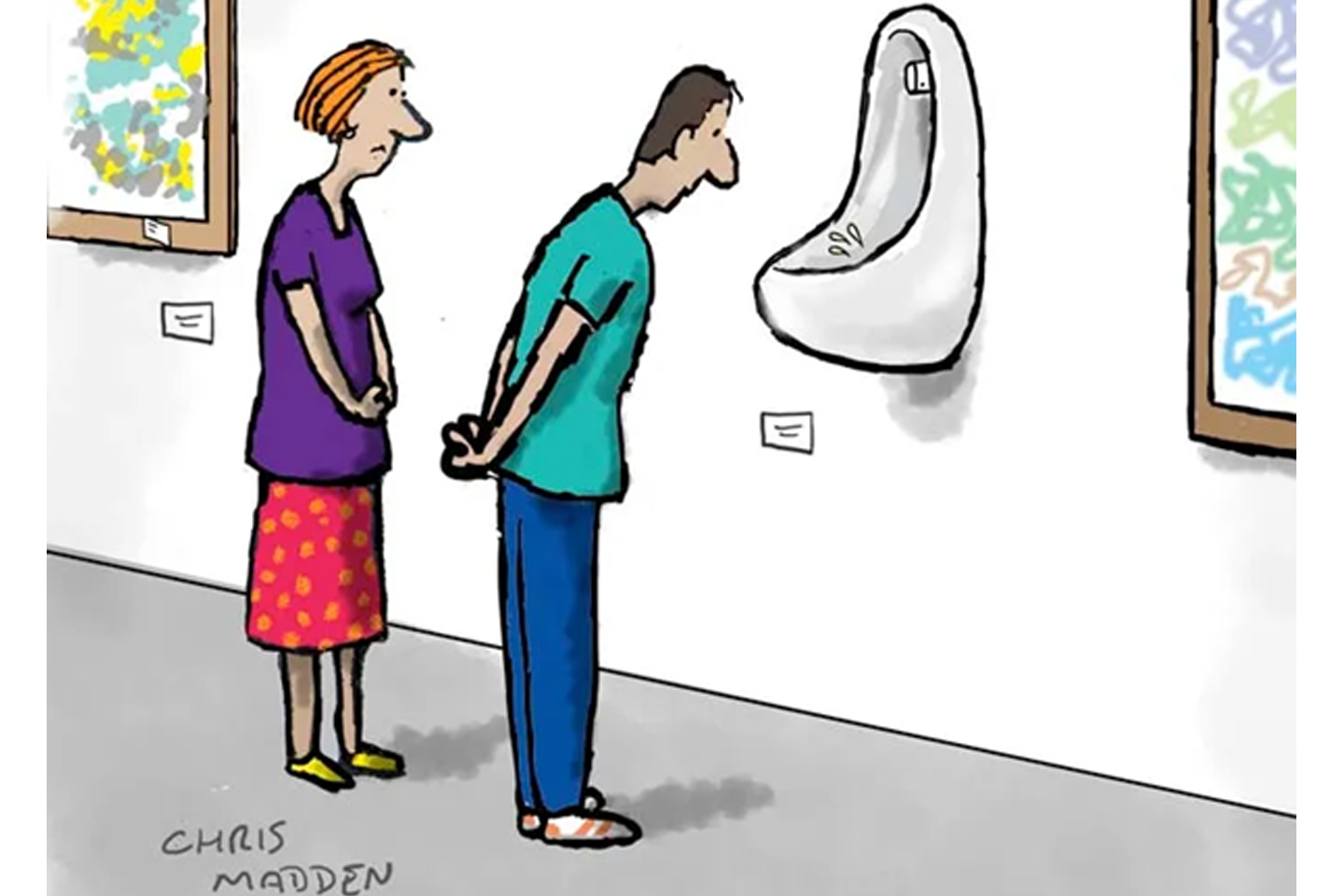A Urinal that Revolutionised Art
An ‘art piece’ consisting solely of an upturned urinal – how would you feel if you saw it on display in a museum? You would be abhorred, calling it absolute nonsense, and criticizing the people who let it be validated.
In the Museum of Modern Art, New York City, there is a display piece titled ‘Fountain’ which is essentially an upturned urinal signed ‘R. Mutt, 1917’ worth 2 million dollars. Feel better now?
The maker of this artwork (Marcel Duchamp) garnered much attention and even more debate for his ‘art’. He is often called a cultural prankster and the face of Dada art, a revolutionary movement that took the art world by storm in the early 20th century. Dadaism is better described as an anti-art movement, for it stood firmly against all prevailing establishments – it was anti-war, anti-capitalist, anti-authority, anti-empire, anti-logic, and anti-intellectual conformity. It took an irrational view of art and rejected the idea that it should be ‘sensible’ or ‘intellectual’. They argued that if war could be justified, so could nonsensical art.
On April 9th, 1917, the avant-garde Duchamp created a work so controversial that the artistic canon was forever unchanged. He kept a porcelain urinal, flipped onto its back, signed, and dated with the appellation ‘R. Mutt, 1917’, and titled it ‘Fountain’.
In itself, the work is a piece of junk, but its influence gave artists the push to challenge society’s idea of art. Though being an object of disgust, it made people shift from aesthetics to the thought behind the artwork. He took an unremarkable object and reappropriated it so that its useful significance disappeared – he created a new thought for that object. The message of Fountain was one of mockery – it mocked not by parodying fine art, but by being its stark opposite: un-crafted, ugly, utilitarian, vulgar and ubiquitous.
The technical definition of art is vague and has been argued over since Plato’s time. But what makes art so expressive is its undefined nature – art is to be perceived as the artist wants it to be. A perfect copy of an image isn’t great art; an original thought brought out through different mediums (simple or elaborate) is what constitutes artwork. Be it Mark Rothko’s No. 7 (1951), ‘Untitled’ by Cy Twombly (1970), ‘Balloon Dog (Orange)’ by Jeff Koons (1990), ‘For the Love of God’ by Damien Hirst (2007) or ‘America’ by Maurizio Cattelan (2016), they are great artistic pieces – even if some call them unworthy. And if it wasn’t for Marcel, they may never have been accepted.

